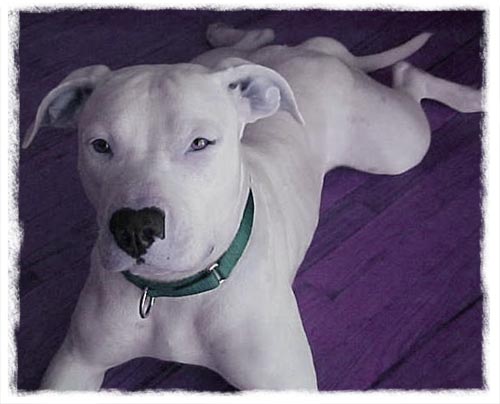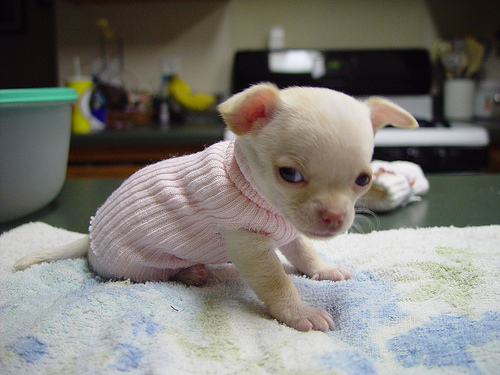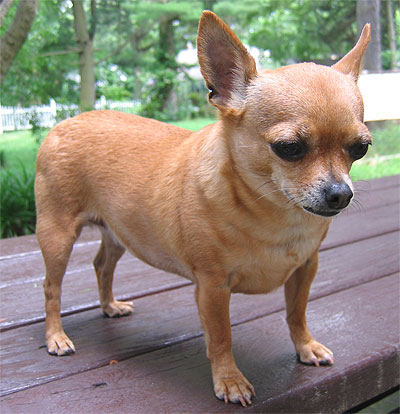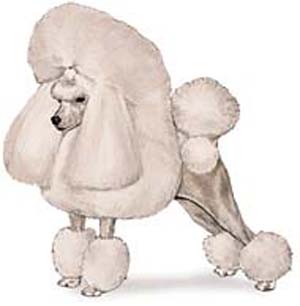
Pit Bull

Pit Bull

Pit Bull

Description | The Pit Bull immediately strikes one as being a dog of power, passion, and undying willingness. The brick-like head, which is especially broad between the cheeks (to house the powerful jaws), is carried upon a thickly muscled, well-defined neck. The neck runs into a deep, thick, well-sprung chest. The American Pit Bull is a very muscular, stocky, yet agile dog which is extremely strong for his size. The ears are generally cropped, though this is optional. Docked tails are not accepted by the UKC or the ADBA. The eyes are round, and any color is acceptable. The teeth should form a scissors bite. Its coat is made up of thick, short, shiny hair. All colors are admissible. The tail tapers to a point. |
| Temperament | The American Pit Bull Terrier has a strong pleasure to please. The APBT has evoked more human emotional, rational, and irrational response than any other breed that exists today. By no means are these dogs people-haters or people-eaters. Their natural aggressive tendencies are toward other dogs and animals, not people. However if they are properly socialized with a firm, but calm, confident, consistent pack leader, they will not even be aggressive with them. These are truly quality companions for quality owners only! The American Pit Bull Terrier is a good-natured, amusing, extremely loyal and affectionate family pet, which is good with children and adults. Almost always obedient, it is always eager to please its master. It is an extremely courageous and intelligent guard dog that is very full of vitality. Highly protective of his owners and the owner's property, it will fight an enemy to the death. It is usually very friendly, but has an uncanny ability to know when it needs to protect and when everything is okay. The American Pit Bull Terrier can be willful with meek owners and needs a firm hand. They are generally okay with other pets if they are raised with them from puppy hood. They are very friendly, but not recommended for most people, because most people do not understand how to properly raise and treat a dog. Problems arise when one does not understands dog psychology, seeing the dog as having human emotions, and ends up with a dog who thinks he is the boss of the house. For a smaller, not as powerful dog, people can sometimes get away with this, however, for a powerful breed, one really needs to understand and follow this concept of keeping a dog. An excellent guide to learning how to properly treat a dog is the Dog Whisperer with Cesar Millan (recommended to all dog owners regardless of the breed they own). Excellent with children in the family, they have a high pain tolerance and will happily put up with rough child play. As with any breed, they should not be left alone with unfamiliar children. Originally used as fighting dogs, the powerful American Pit Bull may go for the throat of strange dogs. A minimum of training, along with the proper amount of exercise and a firm pack leader, will produce a tranquil, obedient dog. Socialize very thoroughly when young to combat aggressive tendencies and be sure to keep the dog under control when other dogs are present. Teach this dog respect for humans by not allowing it to jump up and not allowing it to enter doorways first. The humans must make the dog heal beside or behind them when walking. It has given outstanding results as a guardian of property, but is at the same time esteemed as a companion dog. The objective in training this dog is to achieve a pack leader status. It is a natural instinct for a dog to have an order in their pack. When we humans live with dogs, we become their pack. The entire pack cooperates under a single leader. Lines are clearly defined and rules are set. You and all other humans MUST be higher up in the order than the dog. That is the only way your relationship can be a success. When properly trained and socialized, this is a very good dog and a great family companion. Unfortunately, some choose to promote the fighting instinct in the breed, giving it a bad name. If you would like to witness what a well-balanced Pitbull is like, tune into the Dog Whisperer and check out Daddy and Junior along with the rest of Cesar's pack of Pits. |
| Height, weight | Height: 18-22 inches (46-56 cm) Weight: 22 -110 pounds (10-50 kg) Please Note: The APBT ranges in size from 22 pounds to 110 pounds (rare), with the most common being between 35 - 55 pounds (16-25 kg.), in fact the original APBT's were between 20 - 40 pounds (9-18 kg.) and were bred small for their main purpose, fighting, These dogs are varying from small to extra large. A very common misconception is that APBT's are muscle bound (viscous) hulks that weigh in around 85 pounds (39 kg.) and this is generally not the majority, Most of the APBT's that Are that large have been crossed with another breeds. |
| Health Problems | A generally healthy breed, although some are prone to hip dysplasia, hereditary cataracts, allergies to grass and congenital heart disease. |
| Living Conditions | Pits will do okay in an apartment if it is sufficiently exercised. They are very active indoors and will do alright without a yard provided they get enough exercise. Prefers warm climates. |
| Exercise | American Pit Bull Terriers must have plenty of regular exercise and need to be taken on long daily walks. |
| Life Expectancy | About 12 years |
| Litter Size | Average of 5 - 10 puppies |
| Grooming | The smooth, short-haired coat is easy to groom. Brush regularly with a firm bristle brush, and bathe or dry shampoo as necessary. A rub with a piece of toweling or chamois will make the coat gleam. This breed is an average shedder. |











